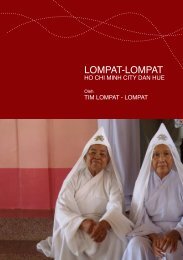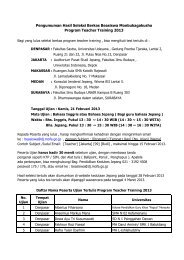9700_y16_sy
9700_y16_sy
9700_y16_sy
Create successful ePaper yourself
Turn your PDF publications into a flip-book with our unique Google optimized e-Paper software.
Cambridge International AS and A Level Biology <strong>9700</strong> <strong>sy</strong>llabus Practical assessment<br />
Analysis (interpretation of data or observations), conclusions and evaluation (ACE)<br />
These marks are awarded for three strands of skills:<br />
• Interpreting data or observations and identifying sources of error<br />
• Drawing conclusions<br />
• Suggesting improvements or modifications to extend the investigation.<br />
Interpreting data or observations and identifying sources of error<br />
Within an investigation, candidates should be able to:<br />
• Calculate the correct answer with the correct number of significant figures using quantitative results or<br />
data provided. This includes calculating mean, percentage, change in mass or length, percentage change<br />
(gain or loss), and finding the rate of reaction using data including 1/time or using the gradient of a line<br />
graph<br />
• Find an unknown value by using co-ordinates or intercepts with axes on a graph or extrapolation where<br />
the data allows<br />
• Estimate the concentration of unknown solutions from qualitative results<br />
• Identify the contents of unknown solutions using biological molecule tests<br />
• Identify anomalous results and remove them before beginning calculations, e.g. when calculating means<br />
• Describe patterns and trends using the data provided in tables and graphs<br />
• Identify <strong>sy</strong>stematic or random errors from using apparatus in an investigation and understand that<br />
<strong>sy</strong>stematic errors do not affect the trend in results whereas a random error, for example, due to<br />
variability of biological material, may affect the trend and accuracy<br />
• Identify the significant sources of error in a particular investigation as any variable that may change<br />
during the recording of results so making the results less accurate<br />
Note: Contamination is not considered a significant source of error since washing correctly should<br />
remove contamination.<br />
• Estimate quantitatively, by calculating the actual error or percentage error (where a particular<br />
measurement is given) to evaluate the uncertainty in quantitative measurements and evaluate the<br />
confidence in the accuracy of results (how close they are to the true value)<br />
• Evaluate the effect of the standardisation of variables on the general trend or pattern and therefore the<br />
confidence with which conclusions might be made.<br />
Drawing conclusions<br />
Within an investigation, candidates should be able to:<br />
• Make conclusions:<br />
– to predict a trend from provided information or results<br />
– from the patterns and trends in data<br />
– on whether investigational data support a given hypothesis<br />
– from results, including estimating an unknown concentration using known concentrations<br />
• Make scientific explanations, using skills, knowledge and understanding of the AS Level Biology<br />
<strong>sy</strong>llabus, of:<br />
– data collected<br />
– observations<br />
– calculated values<br />
– described conclusions<br />
– information provided in unfamiliar contexts.<br />
Back to contents page<br />
www.cie.org.uk/alevel<br />
53





